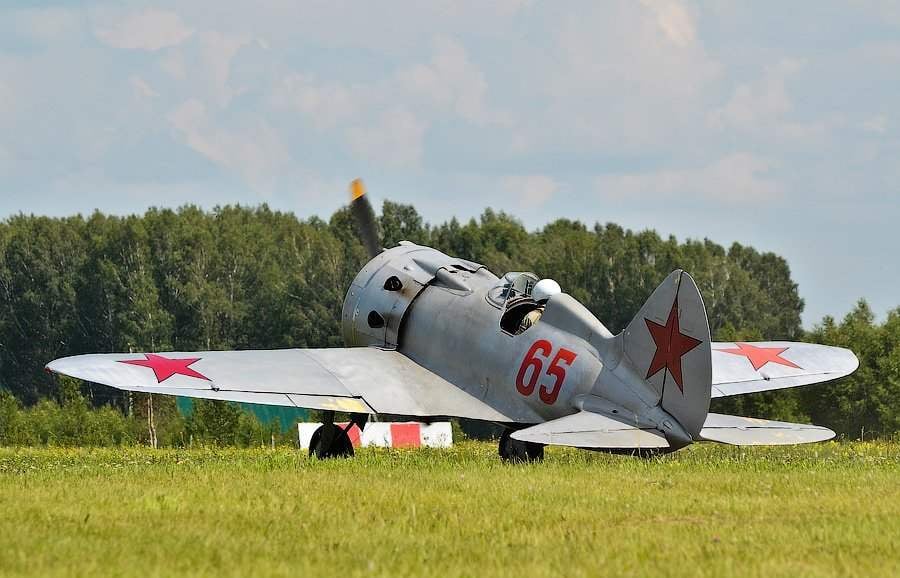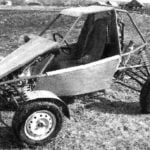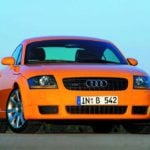 Sixty years have passed since then, as removed from service legendary fighter I-16. For over half a century don’t fly “flying tank” Il-2. But how do you want to see them in the sky! In fact in our days and fly “donkeys” and their peers — “the Seagull”. Only not here, but in other countries, although they are made by our Russian restorers. For foreign customers prepare flying Il-2, MiG-3, U-2.
Sixty years have passed since then, as removed from service legendary fighter I-16. For over half a century don’t fly “flying tank” Il-2. But how do you want to see them in the sky! In fact in our days and fly “donkeys” and their peers — “the Seagull”. Only not here, but in other countries, although they are made by our Russian restorers. For foreign customers prepare flying Il-2, MiG-3, U-2.
For a long time in our country did not pay due attention to preservation of monuments of technique, including aircraft. Moreover, in the 1950s in the Soviet Union destroyed the whole museums possessing large collections of valuable exhibits, such as the Museum of Victory in Leningrad. Only some enthusiasts, such as Yakovlev, on its own initiative, created the exposition of old cars.
Only in the mid-1960s, our country began to care about preservation of historic aircraft primarily from the point of view of military-Patriotic education of youth. A search began not destroyed copies of machines of the great Patriotic war. Some of them have been in military schools where they served as textbooks. But “Triplane” company “sopvich” fighter used in the First world and Civil wars, were discovered in boxes at one of the warehouses of the air force of the Moscow military district, where he was resting from the end of the 1920s, when it was withdrawn from service.
The next step was the restoration of the broken aircraft, since the war lying in remote places. Recovery usually instructed aircraft factories. There were the necessary materials, equipment and were skilled workers and engineers. But to build a new aircraft and to restore the old is not one and the same thing. Over the past years has significantly changed the technology, ceased production of components. In many cases, were lost documentation, primarily drawings. In addition, money for the restoration of the aircraft was allocated very little. Accordingly was the result.

Replica of the fighter I-15bis landing
The restoration of old aircraft engaged small groups of enthusiasts. For example, in the village of Revda in the Murmansk region very well renovated some of the hurricanes. One of them was installed on a pedestal as a monument.
All of these aircraft were intended for static display, that is, couldn’t fly. The only exception could be considered a restored Ilyushin Il-2, which had a working engine (though not aircraft), and even if he couldn’t fly, then run down the lane and bounce.
The task is to create a flying copy of the old aircraft was first delivered in the early 1990s, By this time many countries had organizations air festivals and theatre shows with a demonstration of the machines of the past. They expressed a desire to fill up your Park with a replica of the famous Soviet aircraft. First grabbed for it exhausted the lack of new orders and the reluctance of the state to pay for old orders the defense industry. OKB. Yakovlev, in cooperation with the aviation plant in Orenburg manufactured a batch of aircraft, touted as the Yak-3M. In fact, they represent hybrid nodes Yak-3, Yak-9 and Yak-11 in combination with American engines “Allison”. Imported engines are used as “native” VK-105PF in working condition none are preserved. All of these aircraft ended up in museums and private collections abroad. Abroad is gone and the Yak-3, made by experts from Aviationadministration group in Moscow. He looks a bit closer to “real” fighter, because although it also used the Allison, but the pump suction carb mounted on the bottom, not at the top, slightly altering the feed path.
In several areas undertook a reconstruction of the light aircraft of the past. Wooden design of slats and plywood are reproduced lighter than metal—enough equipment furniture workshop. The result was two fairly good replica of amphibian sh-2 and several U-2 (Po-2). In both cases the M-11 engines produced until the early 1960s; there are still many to this day.
In New Zealand for quite some time there is a kind of “air circus” based in Wanaka. It features dozens of historic airplanes, and arranges air parades and shows. In 1992 its management has addressed with the offer to produce several Soviet fighters I-16 and I-153. For the work came from the group “Aviarestavratsiya” stationed at that time in Novosibirsk.

The build of fighter I-153 “Chaika”
The reality of the implementation tasks was justified by the simplicity of design carried out in large measure of wood and fabric, and the applicability of the engines ASH-62IR (An-2), close to pre-war M-62, standing on the fighters. But it turned out that the technology of wooden aircraft, we have largely been lost. So, I-16 rear part of the fuselage is Vileika of thin veneer, similar to papier-mâché. All have forgotten how it’s done.
Invited instructors of the British and new Zealanders. They began to teach working with wood, linen cording, and most importantly—respect for antiquity, authenticity of parts and assemblies. The closer the car is to the original, the more valuable it is. But if it contains components and assemblies of old aircraft with its history, its category is increased many times. If the original parts more than half, then it is not a replica and refurbished machine with its own destiny, the history of which is carefully tracked.
The first flight of the restored I-16 took place on 9 September 1995 in Novosibirsk. They only built six, and in the latter the share of parts found in different places of cars was about half. Took design I-16 type 24 produced before the great Patriotic war. Of course, full of authenticity was not achieved. The engine ASH-62IR different from the M-62. It is slightly longer and heavier. In order to disguise it, shortened engine mount. To normalize alignment, stance tail wheels were vyfrezerovkami from solid steel bar is disguised as ballast. Screw taken from An-2, but installed only two blades, and two glasses left empty. Radio and appliances put modern—after all, the car must still obtain a state certificate of airworthiness. Currently, three I-16 located in USA, one in Spain, two in New Zealand.
About the same tricks had to apply for I-153. Only there are two pig ballast, fastened in the rear fuselage. “Seagulls” have produced three. Of them now, one in America and two in New Zealand.
According to a similar scheme work was carried out on replicas of I-15bis fighter and its twin educational version of DIT. These planes have several years of successful flying. They can be seen on the aerospace MAKS in Zhukovsky, now they are in the air force Museum in Monino.
Later, work began on a flying specimens of other aircraft during the great Patriotic war, such as Il-2, MiG-3 and U-2. The number of organizations involved in restoration work, is constantly increasing. Only in Moscow do Aircraft restoration group, “Aviarestavratsiya” and “Rusavia”. It is encouraging that there and domestic customers on old equipment. And it’s not just having the very scarce resources of the state museums, but also private investors.
How to begin work on the restoration of the aircraft? Search team canvassing on the presence in the area of scrap cars, do search through the archives, trying to install the crash site. Then examined the area visually and with the use of technical tools such as magnetometers. When the car find, the turn of the restorers. They organize the excavation, the dismantling and evacuation of debris. Sometimes you have to call the bomb squad—come across unexploded bombs and ammunition.

Preparations for the first flight of one of the six built-16
The state found of the aircraft can be very different. From wooden cars in normal conditions there is little left—the tree and the canvas rot entirely. Usually found only rusted motor mount and metal fasteners. But in the swamp, under a layer of mud, without access of air can be maintained and the tree. Metal aircraft have damage during a forced landing or falling; often they show traces of action “hunters” for aluminum, cut down the pieces for delivery to the scrap.
In parallel with evacuation of the fragments deployed in the recruiting documentation: looking for drawings, technical descriptions, instructions, photos. Most valuable are instructions on field repair, showing how using a simple tool, you can quickly get validity of a particular item.
But all this need money. I needed the money, high-quality restoration costing much more than it used to cost a production aircraft. The replica is worth far more than the original itself. Because re-work drawings, fabricate fixtures, special tools and Assembly of the pile—and all this sometimes for a single instance. Many materials in our country already do, for example, a thin high quality plywood imported from Finland. So the main concern of the restorer is to find a customer and persuade him to allocate the necessary funds.
And if you have enough money—you can make, as they say, all or almost all. The most difficult thing for the manufacture of a flying car is to find a suitable motor. To find abroad working American “Allison” or the English “Merlin” — not a problem, the German “Daimler-Benz” or YuMO somewhat more complicated, but still possible. But our VK-105, AM-35 or AM-38 was not preserved.
Thus, our restorers have two choices; to alter the design, say, by “Allison” or to establish the restoration of the engines. The first option is cheaper, but the motor has some shape, size and weight. This almost inevitably affects the car’s appearance, distancing it from the original. The second way is more complicated: need parts ten broken motors lying in the ground for decades, to make one fit. In this work, he needs no worse than a new one.
“First signs” in this direction was the engine AM-38F, assembled from parts of several broken and one of the Museum of the engine and various modifications. It was restored by the Federation of overactivation Russia for the MiG-3, where he had to replace the similar AM-35A. The engine is first tested “cold”, scroll compressed air using the air start and then ran on the dyno. He worked successfully. But, unfortunately, was lost not only the technology of manufacturing large reciprocating engines, but also practices. When one runs in the winter without proper preparation, the engine is seized. It was repaired, but he is still not ready for installation on the aircraft while on the stand. We are currently preparing the second instance.
A copy of the MiG-3 made with American engines “Allison”. He is not flying, but running around the airport and making the approach.
In parallel with the work on the aircraft flying, continues the restoration of the cars for static display in various museums.
Now the restorers are working on a large number of aircraft of various types, not just domestic. Three restored German fighter Messerschmitt Bf 109G, and began to restore the English “hurricane” and the German “Storch”. One ready-made “Messerschmitt” in September 2006, was showcased at the exhibition center “Crocus” on the outskirts of Moscow.
We wish the enthusiastic recovery of aircraft history every success and to Express hope that a lot of “new old” aircraft can be seen not only abroad.
V. KOTELNIKOV



